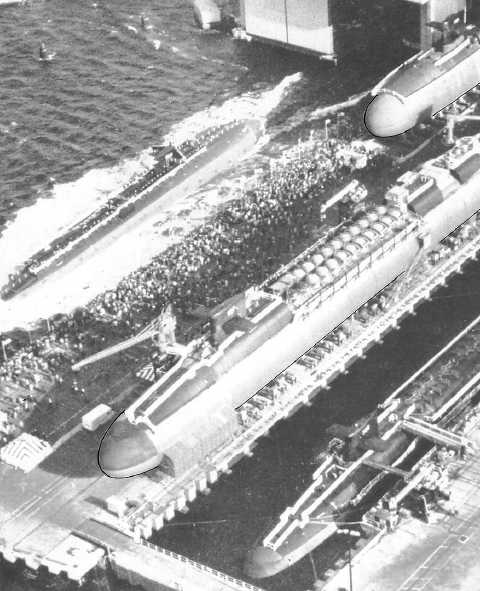| |
ballistic missile submarines (SSBNs) deliver ballistic
missile attacks against assigned targets from either a
submerged or surfaced condition. Nuclear propulsion
has turned the submersible ship into a true
submarine that no longer requires frequent
replenishment of fuel and supplies. (Examples: (1)
The Nautilus, our first SSN, steamed over 62,000
miles without refueling; (2) during a test, the Seawolf
remained submerged for 60 days; (3) the Triton
traveled around the globe under water, remaining
submerged for 83 days.) The submarine’s crew does
not depend on the earth’s atmosphere for air. Units of
air-revitalization
equipment
clean
the
air
continuously. Electrolytic oxygen generators permit
the submarine to extract its own
oxygen from
seawater.
In July 1960 USS George Washington (SSBN-598)
successfully launched, for the first time, a Polaris
guided missile from under water. This shot radically
changed the old concept of submarine warfare, which
was simply to sink enemy ships or submarines with
torpedoes.
Now
nuclear-powered,
high-speed
submarines are able to cruise for months at a time.
They can launch an effective attack against targets
on shore while remaining virtually immune to
retaliation. All sub-marines now being built have
nuclear propulsion.
The oldest SSBNs are being decommissioned or
converted to fulfill SSN duties. Other SSBNs are
being converted to carry Trident missiles. The newest
SSBN class, the Ohio class, carries Trident II
missiles. The Ohio class is the largest undersea
134.112
Figure 19-9.-Two Ohio-class SSBNs under construction and a Los Angeles-class SSN being
launched.
19-10
|

